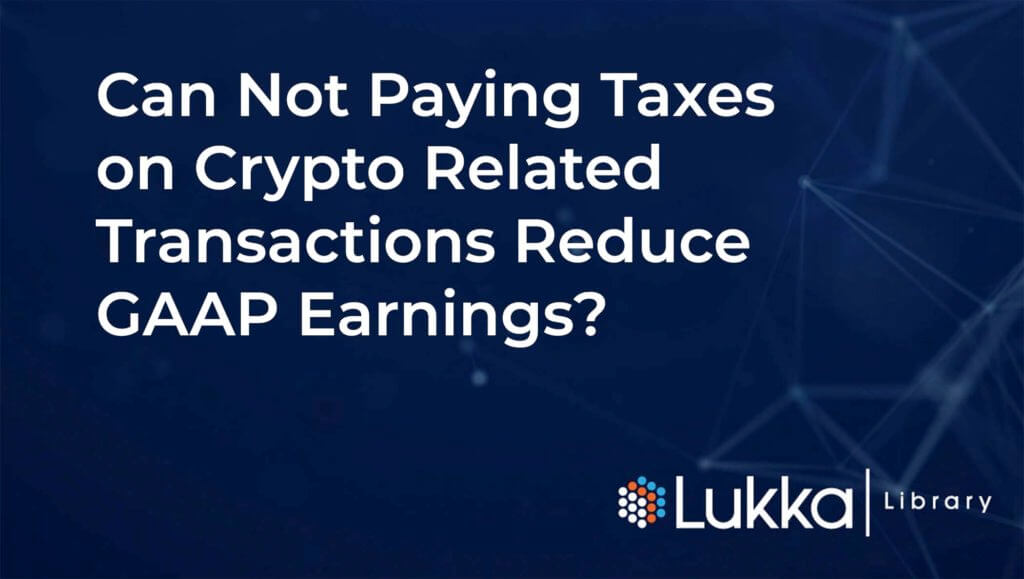Author: Alexander J. Sannella, Ph.D., CPA; Professor of Accounting; Department of Accounting and Information Systems; Rutgers Business School; Newark, New Jersey.
The statements in this document reflect guidance issued as of March 23, 2020.1
The author is writing on his own behalf and none of the statements should be attributed to Rutgers Business School.
The statements in this document should not be treated as legal, tax, or accounting advice. The document is intended to provide general information only. If a person would like such advice, they should seek professional advice with regard to their specific facts.
Accounting for uncertain tax positions is covered under FASB ASC 740. The purpose of FASB ASC 740 is to determine if tax benefits from uncertain tax positions, either permanent or temporary, taken or expected to be taken, can be recognized in the financial statements. Examples of uncertain tax positions include: a decision not to file a tax return, a decision to exclude potentially taxable income from a tax return, a choice in treating a transaction as tax-free, tax positions acquired or assumed in a business combination, and refund claims. Specifically for crypto-related transactions, an uncertain tax position can result from not reporting the following potential taxable events: a gain from a crypto transaction, current income from an airdrop/fork, and a gain from a crypto loan that should have been treated as a disposition under the relevant facts (e.g., the taxpayer could have received other coins of equivalent value in lieu of the coin lent).
The FASB ASC 740 Two-Step Model
FASB ASC 740 employs a two-step approach in accounting for uncertain tax positions. As will be seen in the following discussion, this FASB approach is intended to be a “principles-based” standard and will require significant judgment by management and auditors.
The two steps are:
- Recognition – to determine if a tax benefit is recognized.
- Measurement – if recognized, then we need to measure the benefit.
Step 1: Recognition: In the first step, the entity must determine (after considering all available evidence, both positive and negative) if it is “more likely than not” that the tax position will be sustained under examination by the taxing authority assuming that the taxing authority has full knowledge of all relevant information. The term “more likely than not” means that after examining all available evidence (both positive and negative); there is slightly more than a 50% chance that the tax position will be sustained after full examination by the relevant taxing authority.
Step 2: Measurement If a tax position meets the “more likely than not” threshold, it is now measured to determine the amount of tax benefit to be recognized in the financial statements. The tax position is measured at the largest amount of benefit that is greater than 50% likely of being realized upon ultimate settlement. This measurement system is based on cumulative probability computations without considering the time value of money. In other words, a tax benefit should be measured as the largest amount of benefit that is cumulatively greater than 50-percent likely to be realized (to be illustrated).
After the measurement step is completed, FASB ASC 740 prescribes the separation of the deferred tax balance into: (a) the deferred tax balance based on sustainable book-tax differences based on steps one and two above, and (b) a “FASB ASC 740 Liability” based on the unrecognized tax benefit. The reclassification of the deferred tax balance does not affect the tax expense for the period.
Differences between the tax positions taken and the amounts recognized in the financial statements will generally result in one of the following:
- An increase in a liability for income tax payable or a reduction in an income tax refund receivable.
- A reduction in a deferred tax asset or an increase in a deferred tax liability. • Both of the above.
Illustration: Assume that Raney Day took an aggressive tax position on its current year’s tax return. The deduction claimed has been challenged in prior years by the taxing jurisdictions upon examination of returns of other firms in the industry.
Raney Day reported $1,000 in taxable income before the deduction in question. The deduction taken amounted to $500. Raney Day is subject to 34% tax rate. Based on a careful analysis, management believes that the first step, (recognition), the more likely than not test, is met. The next step (measurement) is to determine the most likely tax benefit (i.e., deduction) that will be realized by Raney Day. In order to complete the second step, management must assess the probability of realization of estimated amounts of the deduction that may be allowed upon future examination of the company’s tax returns. Uncertainty results from the possibility that this year’s tax return may be examined or audited by the taxing jurisdictions in future periods.
The amount of the benefit recognized will be equal to the largest amount of the tax benefit that is greater than a cumulative probability of 50% that it is likely to be realized upon final settlement by taxing authorities. The largest amount of the tax benefit to be recognized in the financial statements is $300. This is shown in the following table:
As noted in the table above, the outcomes are listed from low to high. If the first and highest outcome is over 50%, the lower outcomes do not have to be considered. The key issue with a principles-based standard is judgment in the application of the guidance. FASB ASC 740 did not provide guidance regarding the determination of the probability levels to use for purposes of measuring the tax benefit. Managerial judgment will vary depending on a manager’s risk preference, and other experience with similar tax cases.
The maximum amount of the tax deduction that Raney Day can recognize in the financial statements (reduce tax expense) is only $300 because it represents the largest amount of benefit that is more than 50-percent likely to occur. This is the case even if $500 was deducted on the entity’s income tax return.
*The unrecognized tax benefit increases GAAP income tax expense.
The entry to record the current year’s tax provision is presented below. Note that we assume no other book-tax differences. The contingency for the uncertain tax position increases income tax expense and reduces GAAP earnings.
If the uncertain tax position does not meet the minimum statutory threshold to avoid payment of penalties and considering the FASB ASC 740 recognition criterion, the company will recognize an expense for the amount of the statutory penalty in the period in which the entity claims or expects to claim the position in the tax return. The income tax contingency is increased by the accrual of the expected penalties and interest on the position taken. This accrual will also reduce GAAP earnings. If penalties were not recognized when the position was initially taken, the expense will be recognized in the period in which the entity’s judgment about meeting the minimum statutory threshold changes.
Regarding IFRS, if the position is probable (“more likely than not”), then the entire amount of the benefit is recognized as if it is not an uncertain position. If the tax position is not probable, then the accounting is similar to US GAAP. Under IFRS the amount of the tax deduction recognized on the financial statements (within the computation of income tax expense) is based on either the expected value or most likely amount approach.
1 Portions of this document were adapted from Intermediate Accounting by Gordon, Raedy and Sannella, 2nd Edition, Hoboken, New Jersey, Pearson Education (2019)




